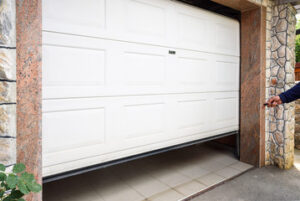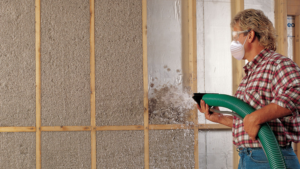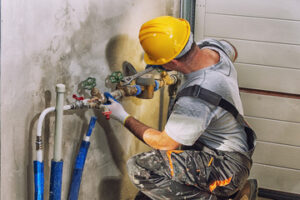Having the right hunting gear is essential to success. If you’re planning an overnight hunt, consider options like a tent or hammock that can protect from the elements.

Pack a mid-layer with synthetic fill or grid fleece to help you regulate your body temperature. The right layers will also ensure comfort. Read on Elk Calls for more information.
A knife is perhaps the most important tool that hunters carry, as it’s used to clean and prepare game. A good hunting knife will retain an edge, as hide and hair are notoriously hard on knives; it should also be strong enough to break bones. Lastly, it must be comfortable in the hand to protect the user from accidental injury.
The blade material of a hunting knife is important, as it will affect the blade’s resilience to corrosion and how easy it is to maintain an edge. Stainless steel is more resistant, while carbon-based metals can be harder to sharpen. The hunting knife’s handle material is another crucial consideration; synthetic materials like G-10 and Micarta are common choices, offering durability and a comfortable grip. Natural materials such as wood and leather can offer a more traditional feel.
Some hunters prefer to carry both a fixed blade and a folding hunting knife, depending on their specific needs. For smaller tasks, such as whittling fire tinder or cleaning an arrow, a quality folding knife stashed in the pocket can be ideal. However, for major field dressing tasks, a fixed-blade knife is preferred.
A hunter can also invest in a hunting knife set, which includes multiple tools to make animal processing easier. These sets often include a caping knife, skinner, boning/fillet knife, butcher knife and bone saw. They can be ideal for the beginner hunter who wants to have all of the tools necessary to process game in one convenient pack.
Snacks
Having the right snacks in your hunting backpack can make the difference between a successful hunt and a wasted trip. The best hunting snacks should be nutritious, lightweight and easy to eat without making any noise. They should also take up little space in your backpack so that you can bring more essential gear.
When hunting, a lot of walking can be involved and it’s important that you keep up your energy levels. Taking some granola bars with you is a great way to do this and these can also be a good source of protein for your trip.
If you want something a bit more filling, try packing some fruit for your hunt. Bananas are a good choice as they can easily fit into your backpack without causing any mess or making too much noise. You could also opt for some dried fruit, like banana chips or even a few fruit leathers, which can be a fun treat that will remind you of your childhood and give you some extra energy for your trip.
Another good option is jerky. It is high in protein and can give you that salty crunch you crave when hunting, and it also has a long shelf life and can be stored easily in your backpack. Another option is trail mix which contains a harmonious blend of carbohydrates, fats and protein to help you stay fueled for your hunt. Just remember to be careful when munching on sunflower seeds, as spitting them on the ground can alert deer and disrupt your hunt.
Water
Getting dehydrated during a hunt is one of the worst things that can happen. Fortunately, most cases where survival techniques are required to procure water can be avoided with careful planning and the right gear. This includes knowing the location of natural water sources and having the equipment needed to clean that water so it is safe for consumption.
A quality water bladder is an essential part of any hunting pack. There are several different types of bladders available in a variety of sizes and materials. Some are even designed to be shatterproof, ensuring you can carry it with confidence on rough terrain. For those that prefer to use a bottle, consider investing in an insulated bottle. These bottles keep your beverage cold or hot for hours, and they are perfect for long days of glassing from windy ridgetops.
A first aid kit is another must-have piece of gear. It should contain a variety of items such as bandages, hand sanitizer and alcohol wipes, pain medication, tourniquets, cordage for splints, etc. Having a first aid kit will allow you to respond quickly in the event of an accident, helping to prevent further damage or injuries and allowing you to return to your campsite faster.
First Aid Kit
A solid first aid kit is one of the most essential pieces of gear for anyone who ventures outdoors. It’s an unsung hero in your backpack, ready to save the day when you get injured on a tough hike or your buddy takes a spill while preparing for that big backcountry hunt.
The backcountry is a dangerous place, even for the most experienced hunters. Rugged landscapes with difficult footing and steep inclines increase the risk of slips, falls and puncture injuries. Add in the cold and the resulting risks for hypothermia increase drastically. The savvy outdoorsman works hard to prevent these issues by ensuring proper nutrition and clothing, staying properly hydrated and planning ahead. But even the most well-planned trip can take a turn for the worse.
When choosing a first aid kit, it’s important to balance size and comprehensiveness. While it’s tempting to pack as much as possible in order to be prepared for every scenario, you can quickly exceed a pack’s weight limit and start to sacrifice some vital items. A good solution is to make sure all your basics are covered and then add in extras like Duct tape, a multitool or a survival blanket for emergencies. These tools can tackle many of the smallest problems on your hunt before they become more serious. From reducing blood flow with a CAT tourniquet to bracing sprained or fractured joints, your first aid kit can be the unsung hero of your hunting trip.
Mobile Phone
Many hunting apparel companies have caught on that hunters love their mobile devices, often outfitting their outer layer jackets with zippered pockets specifically for phones. It’s easy to see why: a phone can be used for safety, selfies, and passing the time while in the stand or scouting for deer. However, smartphones can be so much more than a simple tool for entertaining or work – especially when equipped with apps designed for the outdoors.
The number one must-have app for the modern day hunter is a hunting map or GPS application like OnX Maps. The ability to view satellite images of the area you’re scouting or hunting makes the process far more efficient and productive. This information also helps hunters to find pinch points, water sources, landowner parcels, and more. As a bonus, some advanced hunting maps apps can even help hunters predict the best days to hunt by analyzing weather patterns and comparing previous years’ hunting data.
In addition to this, a thermal camera for a mobile phone can be an invaluable tool for hunters. Providing the ability to spot prey at long distances, these cameras can save time in the field by eliminating the need to walk around and observe deer or other wildlife. They can also be used to record and document encounters with wild animals, providing a greater connection with nature than ever before.
Electrics
A good rangefinder is one of the essential hunting accessories that you must have. It helps you see the target clearly and ensures that your shots are accurate. It also helps you keep a safe distance from the game.
Another important hunting accessory is a camouflage suit or jacket. This will help you blend in with the environment, giving you an advantage over your prey. It can also be helpful in reducing the noise you make, which will help in increasing your chances of a successful hunt.
Lastly, you will want to bring a flashlight or headlamp with you so that you can see in the dark. It will come in handy when you are going after nocturnal animals or during dawn and dusk hunting sessions.
While it’s tempting to pack all sorts of gear that promises a big catch, remember to stick to a carefully curated list. You don’t want to be deep in the wilderness and realize that you forgot a pair of socks or extra ammo!
Always remember to take note of the location of power lines and electrical equipment before you start your expedition. Shooting near these structures can cause damage to the conductor, resulting in power interruptions and serious safety hazards for lineworkers. So, be careful and be observant especially in wooded areas where these structures may be hard to notice.








